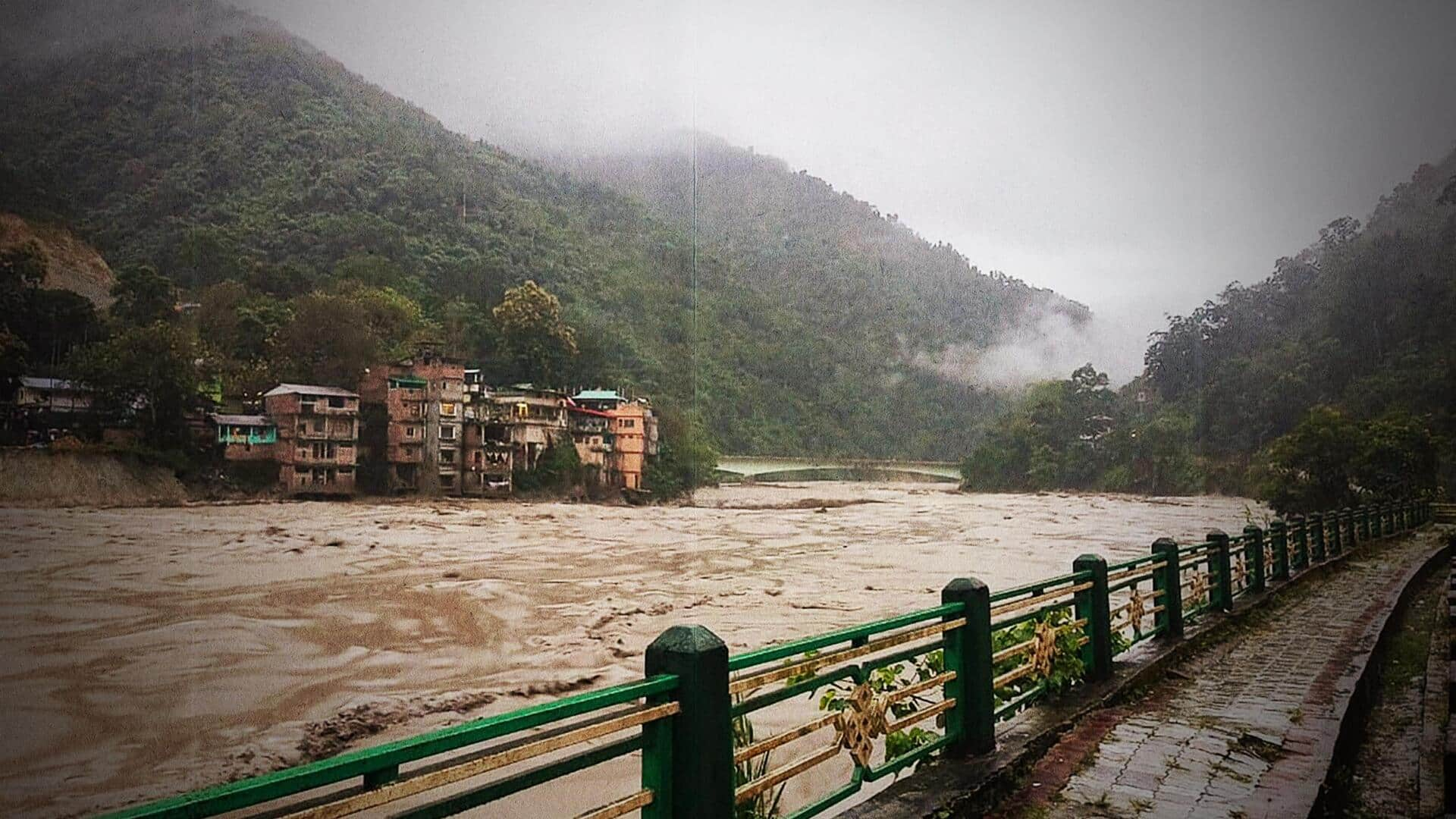
What is the reason behind Sikkim floods
What's the story
Flash floods have wreaked havoc on Sikkim, resulting in 14 deaths, 102 people missing, and the sweeping away of 14 bridges. The floodwater breached the dam on the Teesta River at Chungthang, which was Sikkim's largest hydropower project. These floods happened due to incessant rains, which caused the Lhonak glacial lake to overflow, an event known as a Glacial Lake Outburst Flood (GLOF). Here, we delve into what a GLOF is and the calamity's larger implications.
What
What is a glacial lake?
Before understanding GLOF, let's understand what a glacial lake is. A glacial lake is a waterbody originating from a glacier. It is formed when a glacier erodes the land and then melts, filling the depression formed by the displaced soil. It usually forms at the foot of a melting glacier but can also be positioned on top of or beneath it. Typically, unstable ice or sediment from loose rock and debris acts as a natural embankment for a glacial lake.
How
What causes GLOF?
As a glacial lake expands, it risks breaking the boundary and flooding downstream, known as GLOF. Earthquakes, heavy rain, or ice avalanches can trigger GLOFs. In Sikkim, a cloudburst over the South Lhonak Lake triggered the flooding. The lake's area in 1977 was 17.54 hectares (ha), 37.3 ha in 1989, 78.95 ha in 2002, 98.73 ha in 2008, and 167.4 ha last week, data from the Indian Space Research Organisation (ISRO) shows.
When
Water from over 100 ha gushed in outburst
The ISRO's data shows that after the GLOF, the lake's area contracted to 60.3 ha, indicating the release of water from over 100 ha. In contrast, the Teesta III dam, which was completely washed away in the flooding, had a storage area of merely 6.4 ha. A Sikkim State Disaster Management Authority report in 2019 warned that the lake was "highly vulnerable" to GLOF. Scientists have highlighted that rising temperatures due to climate change have accelerated the melting of glaciers.
Twitter Post
Here's a thread from June warning about GLOF
(2/3) All of these lakes are moraine-dammed lakes considered dangerous for potentially inducing Glacial Lake Outburst Flood (#GLOF) events.
— Ravindra Kumar (@ravindrakhowar) June 10, 2023
Scale
Scale of destruction far greater than flood in Himachal Pradesh
To put the scale of damage in perspective, the total valuation of the 1,200 MW hydropower project at Chungthang was Rs. 25,000 crore, reported Hindustan Times. The cost of building the Teesta III dam, washed away in 10 minutes, alone was Rs. 14,000 crore in 2013. After the onset of the monsoon this year, floods in Himachal Pradesh caused massive destruction amounting to Rs. 10,000 crore.
Facts
GLOF devastated Sikkim exactly 55 years ago
Sikkim faced a similar situation in 1968, when continuous rainfall from October 2 to 5 triggered landslides and floods that killed around 1,000 people. Firstpost reported in 2012 that the contract to build the dam was awarded to a firm with weak antecedents without any competitive bidding, which caused losses of around Rs. 20,000 crore. The Centre for Financial Accountability (CFA) reported that the ecological concerns of locals were sidelined in the bureaucratic process to go ahead with the project.